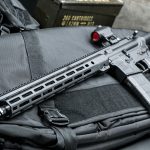The expansion of America’s urban and suburban areas has crowded out many shooting areas and made it increasingly difficult to find a place to shoot, according to a release by the National Rifle Association. On Sept. 24, 2009, Senators Mark Udall (D-Colo.) and James Risch (R-Idaho) introduced S. 1702, a bill that would help remedy this problem by promoting the construction and maintenance of target ranges on public lands.
The bill would amend the Pittman-Robertson Act, a 70-year-old federal law that uses federal excise taxes on firearms and ammunition to fund wildlife conservation programs and the construction of shooting ranges.
The bill’s improvements to the Pittman-Robertson Act would allow the states far greater ability to purchase land, build new target ranges, and improve the ranges that currently exist. Currently, Pittman-Robertson only allows the federal government to use these funds to pay 75 percent of the cost of building or maintaining a range. S. 1702 would change the funding requirements under PittmanRobertson to allow the federal government to finance up to 90 percent of target range construction and maintenance with Pittman Robertson funds.
This change would allow states greater latitude in the allocation of Pittman-Robertson funds and provide an incentive for the use of these funds for the construction of target ranges.
The bill would also provide new authority for states to use Pittman-Robertson funds to acquire lands to use for target range development. Under S. 1702, a state could use its share of Pittman-Robertson funds to finance up to 90 percent of the cost of land acquisition. This is a vital change, as it would allow the states for the first time to use Pittman-Robertson funds to buy land for target range construction. In addition to providing an incentive to the states to develop new ranges, this change would provide greater flexibility to the states in allocating these funds to the projects that are the highest priority for sportsmen.
The bill would give the states up to five years to use Pittman-Robertson funds for range projects and land acquisition. This would allow the states to accumulate funds during a five-year period, to provide more latitude to build range projects or purchase land. Presently, states have only two years to “use or lose” the funds apportioned to them.
Another important provision of S. 1702 is a provision that would protect the federal government from legal liability in relation to the construction and operation of shooting ranges. Despite the fact that such lawsuits have been very rare, the threat of legal action that might result from an accident at a range funded by federal money or located on federal land pprevents federal agencies from authorizing areas of public land fore recreational shooting. S. 1702 would provide immunity from civil lawsuits or money damages for any injury caused by activity at a public range located on federal land or constructed or maintained using Pittman-Robertson funds.















